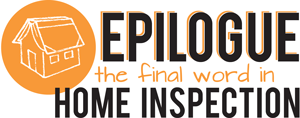What Is Mold?
Mold is classified as a fungus and is part of the natural environment. Outdoors, molds are essential for breaking down dead organic matter, such as fallen leaves and dead trees. But indoors, mold growth should be prevented. Not only is it unpleasant, as evidenced by its musty odor and unsightly staining, but it can cause significant and irreparable damage to a home’s structural components, as well as furnishings and carpeting.
How does it grow?
Molds reproduce by means of tiny spores, which are invisible to the naked eye and float through the air. Mold may begin growing indoors when its spores land on surfaces that are wet. There are many types of mold, but none of them will grow without water or moisture, which is why mold prevention begins by maintaining clean and dry surfaces wherever possible.
Health Effects of mold
Molds have the potential to cause health problems by producing irritants, allergens (which are substances that can cause allergic reactions), and even potentially toxic substances called mycotoxins. Inhaling or touching mold or mold spores may cause allergic reactions in sensitive individuals and even in those not generally allergic. These reactions can include hay fever-type symptoms, such as sneezing, a runny nose, watery eyes, and skin rash (dermatitis). Allergic reactions to mold are common, and they can be immediate or delayed. Molds can also cause asthma attacks in people with asthma who are allergic to mold. Very serious respiratory ailments can result from prolonged exposure to mold.
How do I get rid of mold?
The key to mold control is moisture control. If mold is a problem in your home, you should clean up the mold promptly and fix the moisture problem, because mold cannot grow unless it has a water source, which usually means a plumbing leak or some structural damage that’s allowing water intrusion from the outside. If you discover a leak or have experienced flooding, it’s important to completely and thoroughly clean and dry any water-damaged areas and items within 24 to 48 hours to prevent the onset of mold growth. Surfaces and materials should be treated with an antimicrobial. Some severely water-damaged items that cannot be fully dried out or cleaned may need to be disposed of, such as books and rugs. Be aware that it’s impossible to get rid of all mold and mold spores indoors. Some mold spores may be found floating through the air and in household dust. This is normal. But mold spores will not grow into mold if moisture is not present. If you clean up the mold but don’t fix the water problem, then, most likely, the mold problem will recur. If mold damage is extensive, professional intervention may be required. The easiest way to prevent mold growth indoors is by keeping your home clean and dry and monitoring indoor humidity levels.
The above InterNACHI article is brought to you by Epilogue Home Inspection
